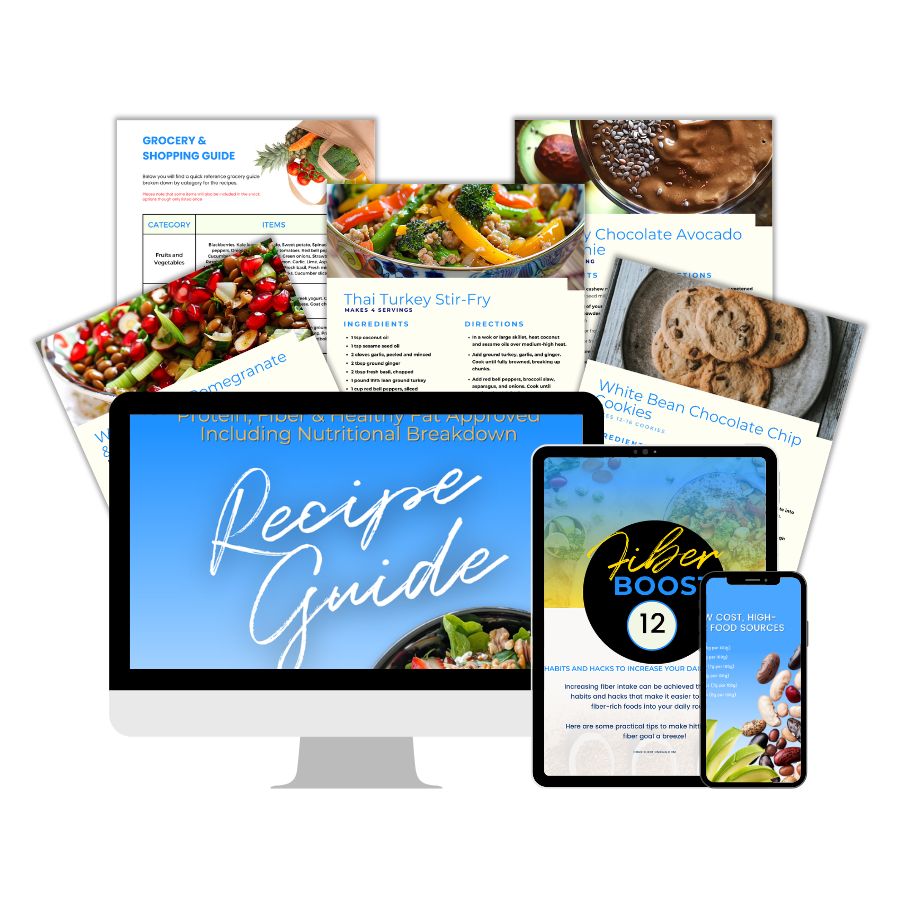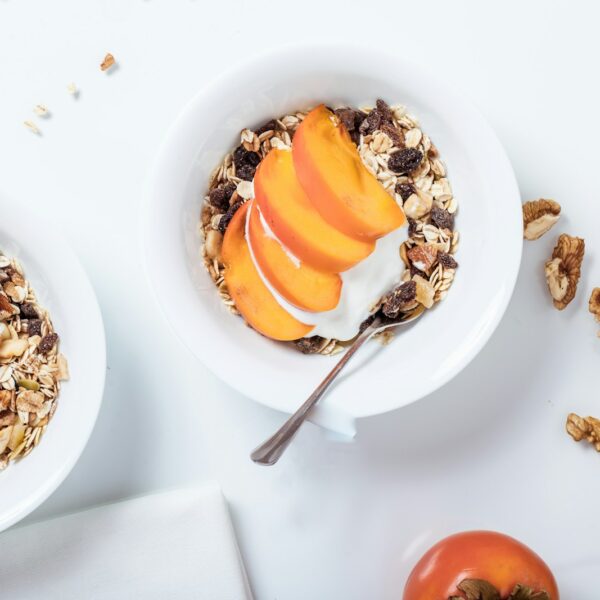Increasing your fiber intake is one of the best things you can do for your health. Not only does it aid in weight loss, but it also improves heart health and gut health. Studies have shown that it can prevent the risk of stroke.
Did you know that less than 3% of Americans meet the minimum daily recommendation for fiber? That means that 97% of us are fiber-deficient. Let’s talk about it. This post will answer your questions about fiber, including how to eat more fiber, what foods are high in fiber, and the benefits of both soluble and insoluble fiber.
Why is Fiber Important?
Fiber is a type of carbohydrate that the body can’t digest. Unlike other carbs, fiber passes through the digestive system relatively intact. Here are some key benefits:
- Heart Health: Fiber helps lower cholesterol levels, which can reduce the risk of heart disease. Increasing fiber intake by just 7 grams a day may be associated with a 7% risk reduction for strokes.
- Weight Loss: High-fiber foods are more filling, helping you eat less and stay satisfied longer. When you feel more full, your body stops demanding more food and releases the hormone leptin. Leptin tells your brain that you have had enough to eat.
- Gut Health: Fiber aids digestion and prevents constipation by adding bulk to the stool.
Types of Fiber
Soluble Fiber
Soluble fiber dissolves in water to form a gel-like substance. It can help lower blood glucose levels and cholesterol. Sources include:
- Oats
- Apples
- Citrus fruits
- Carrots
- Barley
Insoluble Fiber
Insoluble fiber does not dissolve in water. It helps food move through your digestive system and increases stool bulk. Sources include:
- Whole grains
- Nuts
- Beans
- Cauliflower
- Potatoes
How to Eat More Fiber
1. Start Your Day with Fiber-Rich Breakfasts
Begin your day with high-fiber cereals or oatmeal topped with nuts and fruits like berries or bananas. You can also add chia seeds or flaxseeds for an extra fiber boost.
2. Incorporate Whole Grains
Choose whole grains over refined grains. Swap white bread for whole wheat, white rice for brown rice, and try quinoa or barley in salads and soups.
3. Load Up on Fruits and Vegetables
Aim for at least nine servings of fruits and vegetables a day. Snack on raw veggies, add them to your meals, and make smoothies with fibrous fruits like apples, pears, and oranges. As a rule, half of your plate full of vegetables at a meal is the way to go. Plus, as the old saying goes, “an apple a day keeps the doctor away”. As it turns out, it actually does help!
4. Include Legumes in Your Diet
Beans, lentils, and peas (I like the sweet baby green ones) are excellent sources of fiber. Add them to soups, stews, salads, or make them the star of your meal.
5. Snack on Nuts and Seeds
Nuts and seeds are great fiber-rich snacks. Keep almonds, sunflower seeds, or pumpkin seeds handy for a quick, healthy bite.
6. Drink Plenty of Water
Drinking water helps fiber work better in your digestive system. Make sure you stay hydrated throughout the day.
How to Get 25-30 Grams of Fiber a Day
Here’s a simple plan to help you reach your daily fiber goal:
Breakfast:
- Oatmeal with berries and a tablespoon of chia seeds (8g fiber)
Snack:
- An apple (4g fiber)
Lunch:
- Quinoa salad with mixed vegetables and chickpeas (10g fiber)
Snack:
- Carrot sticks and hummus (5g fiber)
Dinner:
- Grilled chicken with a side of brown rice and steamed broccoli (8g fiber)
Total: 35 grams of fiber
High-Fiber Foods List
Here’s a quick list of foods high in fiber to include in your diet:
- Fruits: Raspberries (8g per cup), Pears (6g per medium fruit), Apples (4g per medium fruit)
- Vegetables: Broccoli (5g per cup), Brussels sprouts (4g per cup), Carrots (4g per cup)
- Legumes: Lentils (15g per cup), Black beans (15g per cup), Chickpeas (12g per cup)
- Whole Grains: Barley (6g per cup cooked), Quinoa (5g per cup cooked), Brown rice (4g per cup cooked)
- Nuts and Seeds: Chia seeds (10g per ounce), Flaxseeds (8g per ounce), Almonds (3g per ounce)
Unique Facts About Fiber
- Fiber and Longevity: Studies have shown that a high-fiber diet can increase life expectancy by reducing the risk of chronic diseases.
- Mood Booster: Fiber can influence gut bacteria, which in turn can affect your mood and mental health.
- Blood Sugar Control: Soluble fiber helps slow the absorption of sugar, improving blood sugar levels and reducing the risk of type 2 diabetes.
Incorporating more fiber into your diet is a simple and effective way to improve your overall health. By following these tips and including high-fiber foods in your meals, you can easily reach your daily fiber goals and enjoy the benefits of better heart health, weight management, and improved digestion. Start today and feel the difference in just a few weeks!
Need more help lowering blood pressure? Check out this post here.
Ready to boost your fiber intake and transform your health? Get our “Fiber Boost” Program for a jump start. Incorporate more fiber into your diet, eat delicious recipes, get meal prep tips, and a 14-day challenge to get you started!
With Fiber Boost, there’s no need for elaborate meal plans, large grocery bills, or calorie counting. You’ll learn how to easily incorporate more fiber into your diet, feel fuller longer, and improve your overall health in just 14 days.
Fiber Boost: Transform Your Health with Simple, Fiber-Rich Habits




Leave a Comment